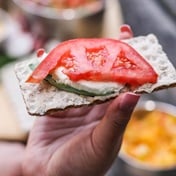Worldwide there is an increasing trend to eat ultra-processed foods (UPFs). And we’re consuming many of them as snacks.
The problem? It’s bad for waistlines, and even worse for our health. Here are five things you perhaps didn’t know about UPFs:
- UPFs refer to the types of food that are industrial food formulations, and typically contain five or more ingredients. Ingredients often include additives whose purpose is to imitate sensory qualities of unprocessed or minimally processed foods, or to disguise undesirable sensory qualities.In contrast, unprocessed or minimally processed foods are food that are still in their natural (or mostly natural) form without losses of nutrients, or have been slightly processed for example by drying, freezing, pasteurising, roasting or by removing inedible parts
- The main purpose of ultra-processing is to create products that are ready to eat, to drink or to heat, so that it can replace both processed and minimally processed foods that are naturally read to consume, such as fruit, vegetables, nuts, milk or water.
- UPFs are usually hyperpalatable, in attractive packaging, and are often also aggressively marketed to children and teenagers.
- They are also typically energy dense (meaning they contain a lot of kilojoules per gram), and high in sugar, sodium (salt) or fat. Some may however also include added micronutrients, to make it seem healthier. You can probably imagine hundreds of examples now: fizzy cooldrinks and ‘energy’ drinks, crisps, chocolate bars,’ energy’ bars, breakfast cereals, viennas... the list goes on. So, what’s the problem with these foods? Though we should be able to enjoy all foods without any guilt, we should also be aware that it can compromise our health.
- UPFs can increase your risk for unwanted weight gain. Because these foods are hyperpalatable, and usually also low in fibre (fibre assists us in feeling fuller for longer), it is easy to overconsume these foods. As mentioned earlier, these foods are typically also high in energy (kilojoules) which means we can more easily exceed the amount our bodies need for normal functioning, leading to the storage of energy as fat. In South Africa, approximately 7 in 10 females and 3 in 10 men are overweight or obese. And children are also affected: 13% of children under five and cent, with 14,2% children 6-14 years are overweight or obese. Being overweight or obese puts you at a higher risk of developing noncommunicable disease such as type 2 diabetes, hypertension and cardiovascular disease. Diabetes is currently the number one killer of women in South Africa. So reducing our (and our children’s’!) risk for becoming overweight or obese by cutting down on UPFs, is a smart move
- Lastly, UPFs also tend to replace more nutritious foods in our diets. This is also very concerning, because can lead to what called a “hidden hunger”, when you don’t have consume enough nutritious foods and have micronutrient deficiencies. More than a quarter of children in South Africa are stunted (short for their age) due to chronic malnutrition. These children will not necessarily always look wasted, because they could perhaps be eating a lot of starchy and ultra-processed foods and drinks. But without the necessary micronutrients, they are not able to grow properly, both cognitively and physically. But even us, as adults, can suffer from a hidden hunger if we don’t eat the a diverse diet rich in the necessary micronutrients, which can lead to poor immunity, decreasing our risk for being able to fight infections.
An easy fix? Well, when it comes to nutrition, weight and health, there are never really “quick” or “easy” fixes.
A healthy diet is one that is consistently diverse in a variety of mostly whole or minimally processed foods such as wholegrains and starchy vegetables (such as potato and butternut), protein (such as lean meat, eggs or plant protein such as beans and lentils), nuts, dairy and, of course, vegetables and fruit.
So, in line with this year’s National Nutrition Week theme of “Eat more vegetables and fruit every day”, swapping ultra-processed snacks for you and your children for more micronutrient rich vegetables and fruit is a good start.
This can help you reach you and your children reach the target of eating three vegetable portions and two fruit portions per day.
Here are a few lunchbox-friendly options to try:
- Carrot sticks with hummus or cottage cheese dip
- Baby tomatoes and slices of cucumber on rice cakes
- Orange segments
- 1 cup of grapes
- 30g of dried fruit such as raisins, or 2 dried dates. Add in some unsalted nuts.
- 2 Small plums
- Unsweetened yoghurt with cut fruit and seeds
- Blended frozen banana and cocoa powder for a chocolate flavoured “nice-cream”
- Fruit smoothies made with 1 cup chopped or frozen fruit, and ½ cup milk and ice
- Sliced fruit on wholewheat toast (bananas and strawberries work well)
- Any grab-‘n-go fruit, such as apples, pears, banana, peaches and naartjies
More tips on how to include vegetables and fruit every day, portion sizes for adults and children and how to eat more vegetables and fruit on a budget.
*Information from the National Nutrition Week 2020 and 2021 concept documents was used in this article.
*Liezel Engelbrecht is a registered dietitian and ADSA spokesperson




 Publications
Publications
 Partners
Partners












